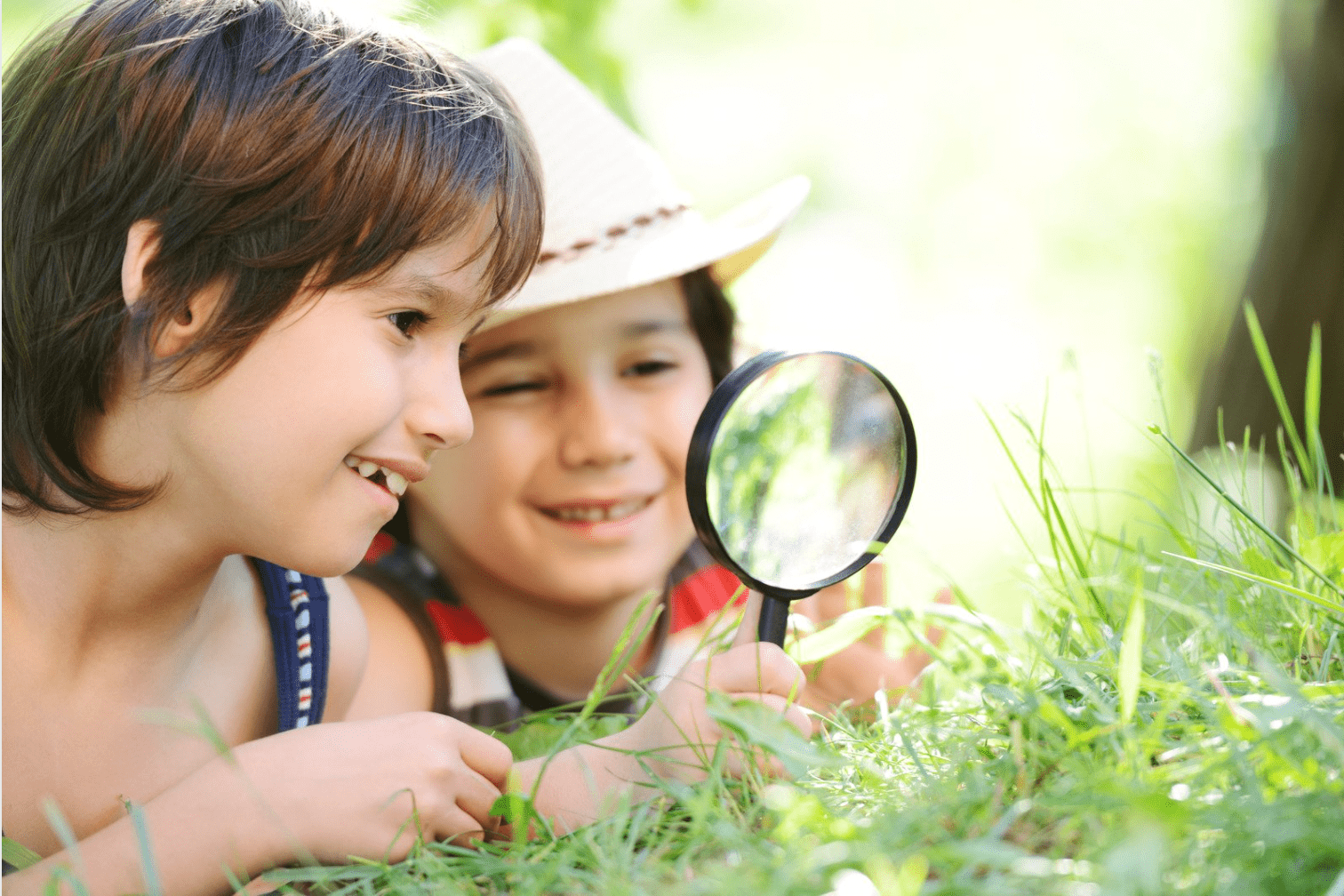
How to encourage science and nature learning outdoors
Although we can’t always rely on the weather in the UK, at the Good Play Guide, we believe that getting outside in the fresh air and exploring nature is among the most fun and valuable learning experiences children can have.
In addition to helping their mental health and wellbeing, exploring the great outdoors boosts children’s learning by developing their observation skills, nurturing their natural curiosity and building their resilience.
It can also provide lots of open-ended creative opportunities for children to engage in learning about science and nature. If you are looking for ways to encourage your child to explore their natural surroundings, read on for some tips that can help:
Encourage their interest in nature through the power of reading.
Engaging books such as Campbell’s “My Little Green World’ series each cover a different insect and are also a great way to introduce preschoolers to nature and sustainability.
The interactive features engage children’s curiosity and observation skills, while helping them learn about habitats and the insect’s role in their ecosystem.
Reading books like this together can foster your child’s interest in science and nature and also provides an accessible way to talk about important environmental topics like sustainability.

Put aside some ‘green time’ regularly to get outside and see something new.
Whether that is in your garden, the park, nearby woodland, a community green space or allotment, there are many local green spots (no matter how big or small) that can be explored.
Child-friendly binoculars such as Learning Resources GeoSafari Jr. Kidnoculars Extreme can help encourage children to observe and learn about the different plants, birds, mammals, fish and insects they can see and hear. The magnification and built-in amplifying microphone helps with focusing their concentration and attention on their surroundings.
By helping them to identify and describe the different organisms they can see, they expand their scientific vocabulary and observation skills while developing their knowledge of the different organisms that might be present at a particular time of year. For example, you encourage them to look at changing flowers and plants, the colours of the leaves, the bumblebees or the birds’ nests.

Join a local litter pick up.
Depending on where you live, there may be local litter pick ups in the parks or even on the beach. This is a social way to get outdoors while also doing something worthwhile for the environment and community. This teaches children about citizenship and social responsibility, as they learn that contributing something (no matter how small) can make a difference.
Challenge them to do fun experiments in the park, field, woods or garden.
Educational toys like the Learning Resources 5-in-1 Measure Mate introduce children to the concept of measurement while encouraging them to get outdoors.
The versatile tool can be used in five different ways including measuring the dimensions of the inside and outside of objects, lengths, heights and distances. It provides a great form of hands-on learning, especially when children are given challenges to complete.
For example, you could set your child the task of measuring the distance from one side of the park to the other, the length of the longest thing they can find and identify the straightest nearby object. Finding the answers to these questions encourages children to use problem-solving, visual thinking and perseverance.
Creative science kits also provide children with all of the equipment to conduct their own experiments on different scientific concepts, for example the Thames & Kosmos Kids First Weather Science Kit allows children to explore the science behind weather.
Following steps in a sequence to complete an experiment teaches them logical thinking skills and at times, requires perseverance and creative problem-solving too. As they observe the results of their investigation, they understand cause and effect and how weather systems work.


Try some gardening or join a community garden.
Even if you don’t have a garden yourself, you can try planting herbs or vegetables on the balcony, window boxes or even growing seeds on the windowsill. Alternatively, you could see if there are community garden activities suitable for children locally, or help an elderly neighbour or family member with their garden.
Kits such as the Insect Lore Very Hungry Caterpillar Butterfly Growing Kit provide a hands-on way to observe a life cycle in real-time, developing children’s understanding of the process of metamorphosis. Growing a living thing is a rewarding experience too, teaching children valuable social skills such as patience and empathy.

Conclusion:
We all know that exploring nature can be a great mood booster with numerous benefits for us all, including better sleep, concentration and improved health and wellbeing.
However, it can also provide a great way to ignite children’s curiosity and passion for learning. Try some of our tips to enhance your time spent outdoors and help your child engage with their surroundings.
By choosing activities and toys that encourage children to get hands-on and creative with observations and experiments, they will reap the benefits of skills and knowledge relating to science, nature and sustainability.


